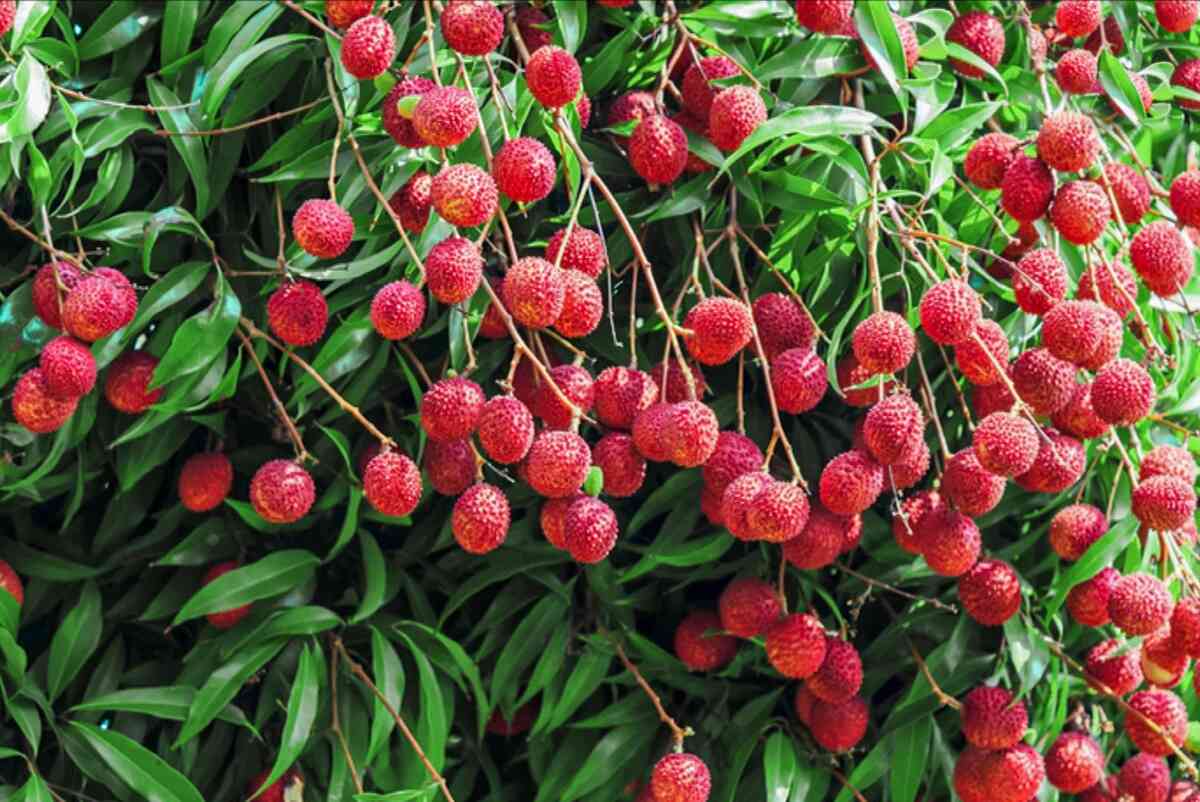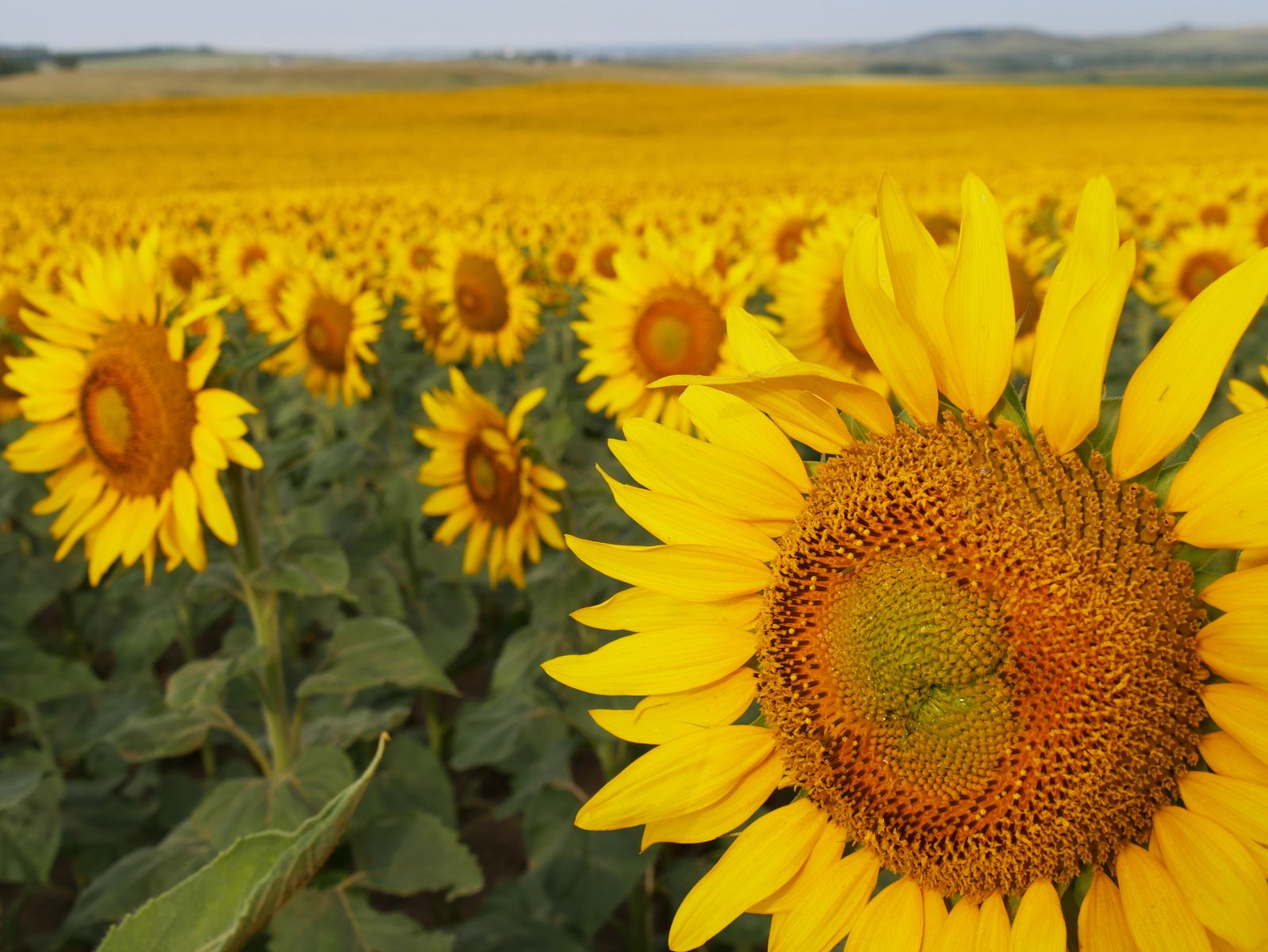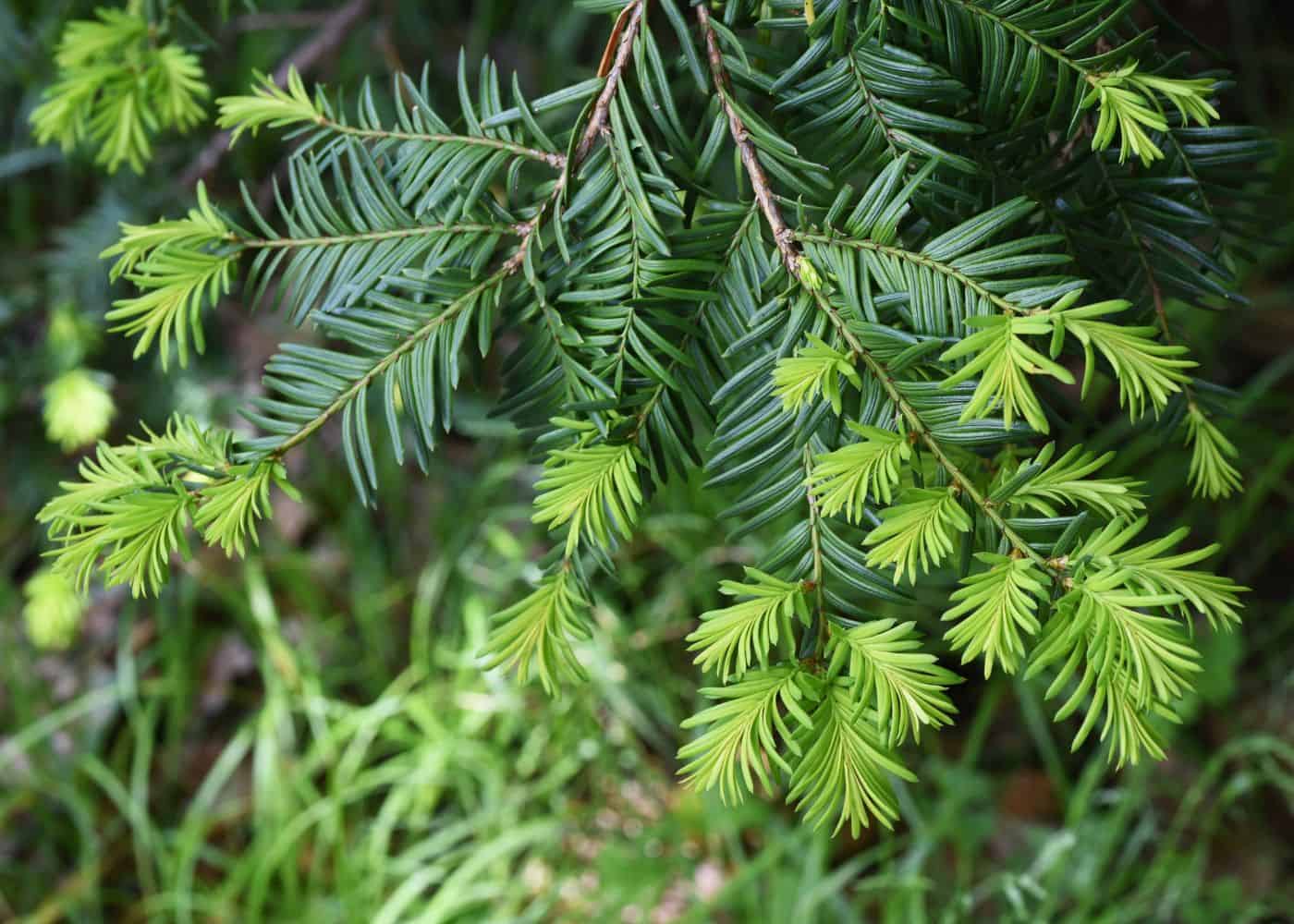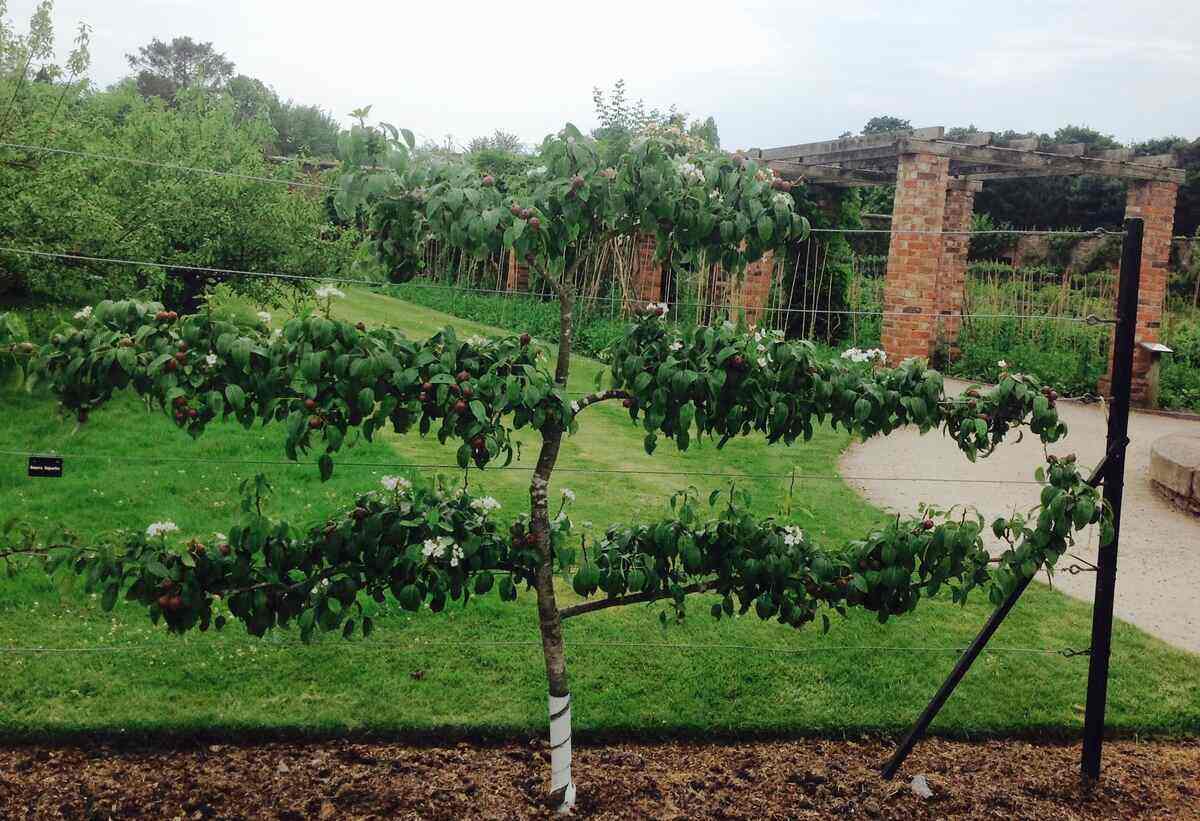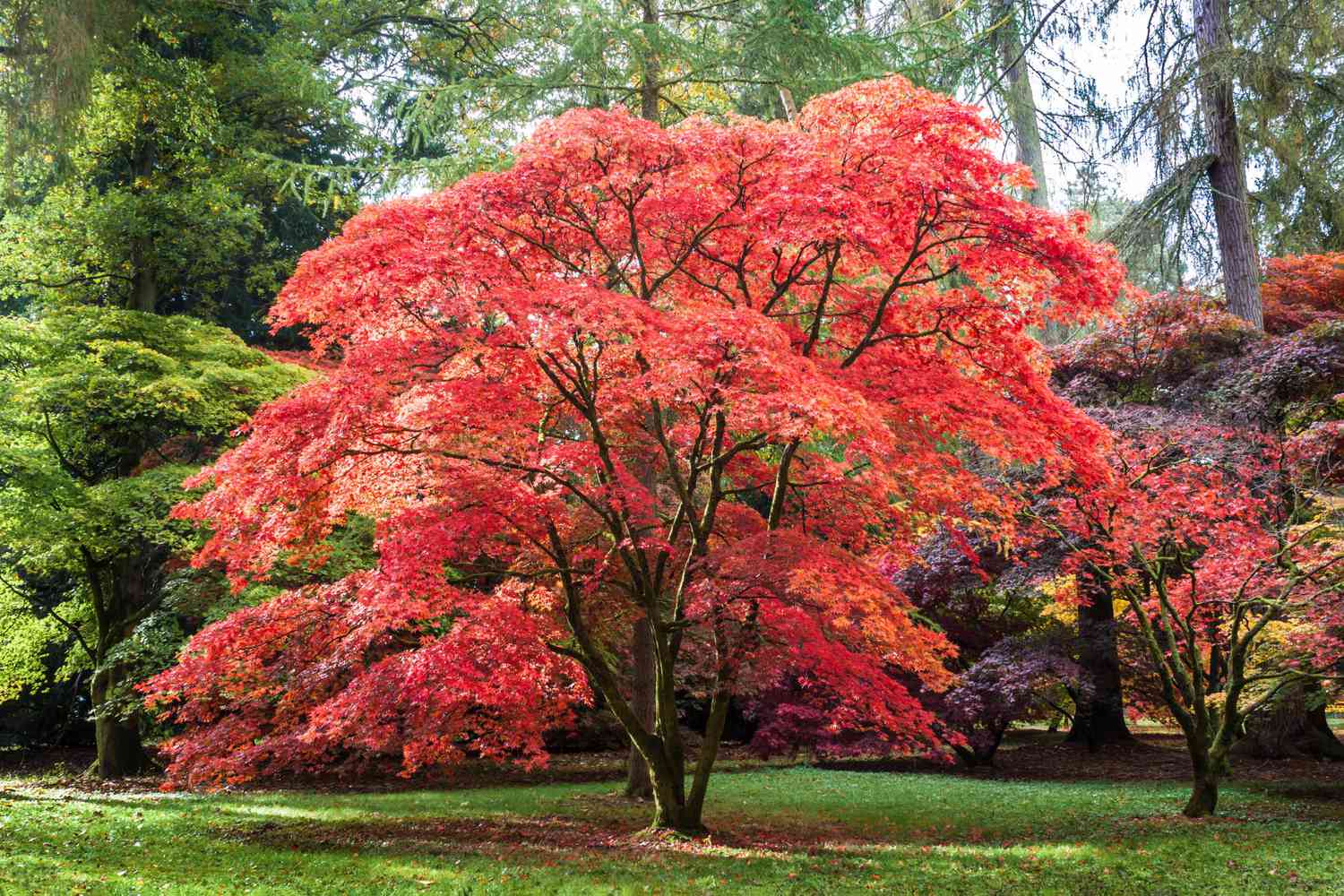Home>Types of Gardening>Edible Gardening>What Fruit Trees Grow In North Carolina


Edible Gardening
What Fruit Trees Grow In North Carolina
Modified: January 22, 2024
Discover the best fruit trees for edible gardening in North Carolina. Grow a variety of delicious fruits in your own backyard with our expert tips and recommendations.
(Many of the links in this article redirect to a specific reviewed product. Your purchase of these products through affiliate links helps to generate commission for Chicagolandgardening.com, at no extra cost. Learn more)
Table of Contents
Introduction
Welcome to the world of edible gardening! Growing your own fruits and vegetables is not only a rewarding and fulfilling experience but also a great way to ensure you have a fresh and healthy food source right in your backyard. In this article, we will delve into the wonderful world of edible gardening with a specific focus on fruit trees that thrive in the diverse climate of North Carolina.
North Carolina, with its varying elevations and climates, provides an ideal environment for growing a wide range of fruit trees. Whether you are a seasoned gardener or a beginner, there is something for everyone to enjoy when it comes to cultivating fruit trees in this beautiful state.
Before we dive into the specifics of different fruit trees, it’s important to understand the climate and growing zones in North Carolina. The state experiences a temperate climate with four distinct seasons. However, the specific conditions can vary depending on the region you are in. North Carolina is divided into USDA hardiness zones 5 through 8, with the western part of the state being colder than the eastern coastal regions.
Now that we have a general understanding of the climate and growing zones in North Carolina, let’s explore some of the popular fruit trees that can thrive in this region. From apple trees to blueberry bushes, there is a wide variety of options to suit your preferences and gardening goals.
Climate and Growing Zones
North Carolina’s diverse climate and topography provide an ideal environment for a wide range of fruits. The state is divided into USDA hardiness zones 5 through 8, which provide a helpful guideline for gardeners when selecting the most suitable fruit trees for their specific regions.
In Zone 5, which covers the higher elevations of the western part of the state, the climate can be quite cold during winter months. Fruit trees that can tolerate colder temperatures, such as apple and peach trees, are best suited for this region. Varieties like ‘Granny Smith’ and ‘Golden Delicious’ apple trees are known for their ability to withstand frosty conditions.
Zone 6 covers the majority of North Carolina, including the central and Piedmont regions. The growing season is longer compared to Zone 5, making it conducive for a wider range of fruit trees. In addition to apple and peach trees, this zone is also suitable for pears, cherries, and plums. Varieties like ‘Bartlett’ and ‘D’Anjou’ pear trees are popular choices for their delicious fruits, while ‘Stella’ and ‘Montmorency’ cherry trees are known for their excellent yields.
Zone 7, which includes the coastal plain and a portion of the Piedmont region, has milder winters and a longer growing season. This zone is suitable for a variety of fruit trees, including figs, persimmons, and pecans. ‘Brown Turkey’ and ‘Celeste’ fig trees are popular options for their sweet and juicy fruits, while ‘Fuyu’ and ‘Hachiya’ persimmon trees thrive in this zone.
Zone 8, found in the southeastern coastal areas, is characterized by mild winters and hot summers. This zone is ideal for fruits like blueberries and raspberries, which thrive in slightly acidic soil and can tolerate the heat. ‘Bluecrop’ and ‘Southern Highbush’ blueberry bushes are known for their exceptional flavor and high yields, while ‘Autumn Britten’ and ‘Heritage’ raspberry bushes are popular choices among gardeners.
Understanding the specific growing zone in your area is crucial when selecting fruit trees for your edible garden. It ensures that you choose trees that will thrive and produce an abundant harvest in your climate. Additionally, pay attention to factors such as soil type, sunlight availability, and water drainage to create the optimal growing conditions for your fruit trees.
Now that we have explored the climate and growing zones of North Carolina, let’s dig deeper into some popular fruit tree options that can be successfully grown in this diverse state.
Apple Trees
Apple trees are a popular choice among gardeners in North Carolina due to their versatility, delicious fruits, and ability to thrive in varying climates. They are best suited for USDA hardiness zones 5 to 7.
When selecting apple trees, it’s important to consider factors such as chill hours, which is the cumulative time during winter when the temperature is below 45°F (7°C). In Zone 5, where cold winters are common, apple trees with higher chill hour requirements, such as ‘Granny Smith’ and ‘Golden Delicious’, are excellent choices.
In Zone 6, where the temperatures are milder, apple trees with moderate chill hour requirements, such as ‘Fuji’ and ‘Gala’, can be successfully grown. These varieties are known for their sweet and crisp fruits, making them a favorite among home gardeners and for making fresh apple pies.
For Zone 7, apple trees with lower chill hour requirements, like ‘Anna’ and ‘Dorsett Golden’, are ideal. These varieties bloom earlier in the season, ensuring a higher chance of fruit production. They also have a good resistance to diseases common in humid climates.
When planting apple trees, make sure to choose a sunny location with well-draining soil. Apples thrive in slightly acidic to neutral soil. Pruning and thinning the trees regularly will encourage better airflow and prevent disease. It’s also essential to spray for pests and diseases to maintain healthy and productive apple trees.
Apple trees can be grown as a single tree or as a multi-grafted tree, which allows multiple apple varieties to be grown on the same tree trunk. This can be a great option for those with limited space who still want a variety of apple flavors in their harvest.
Whether you have a small backyard or a larger garden space, growing apple trees in North Carolina is a rewarding experience. They not only provide a bountiful harvest but also add beauty to the landscape with their delicate blossoms in spring and colorful foliage in the fall.
Next, let’s explore another popular fruit tree variety that thrives in North Carolina – the peach tree.
Peach Trees
Peach trees are a delightful addition to any edible garden in North Carolina. With their luscious, juicy fruits and beautiful blossoms, they are a popular choice among both novice and experienced gardeners. Peach trees thrive in USDA hardiness zones 6 to 8, making them suitable for various regions in the state.
When selecting peach trees, it’s important to consider the chill hours required for proper fruit development. Chill hours are the cumulative time during winter when the temperature is between 32°F (0°C) and 45°F (7°C). In North Carolina, where temperatures can vary significantly between regions, it’s crucial to choose peach tree varieties that align with your specific climate zone.
Zones 6 and 7 experience cooler winters, making them suitable for peach tree varieties with higher chill hour requirements. ‘Redhaven’ and ‘Elberta’ are popular choices in these zones. These varieties produce large, flavorful peaches that are perfect for eating fresh, canning, or baking into delicious desserts.
In Zone 8, which has milder winters, peach trees with lower chill hour requirements, such as ‘Belle of Georgia’ and ‘Florida King’, can flourish. These varieties offer excellent yields and are known for their sweet, juicy peaches.
Peach trees prefer well-draining soil and full sun exposure. It’s important to ensure proper soil moisture and provide regular irrigation, especially during dry periods. Pruning peach trees is essential to maintain their shape, promote airflow, and improve fruit production.
To protect peach trees from common diseases, such as peach leaf curl, brown rot, and bacterial spot, it’s important to apply fungicides and practice good sanitation techniques. Regular monitoring for pest infestations, such as peach tree borers and aphids, is also recommended.
Peach trees are typically fast-growing and can reach heights of 15 to 25 feet (4.5 to 7.6 meters). However, dwarf and semi-dwarf varieties are also available for those with limited space or prefer smaller trees. These varieties not only require less space but also make it easier to harvest the delicious fruits.
Whether you choose a standard or dwarf variety, planting peach trees in your North Carolina garden will provide you with a bountiful harvest of sweet, succulent peaches. From enjoying them fresh off the tree to preserving them for future use, peach trees offer a taste of summer that can be enjoyed for years to come.
Next, let’s explore another popular fruit tree variety that can thrive in North Carolina – the pear tree.
Pear Trees
Pear trees are a wonderful addition to any edible garden in North Carolina. With their delicious fruits and elegant foliage, pear trees offer beauty, shade, and a bountiful harvest. They thrive in USDA hardiness zones 5 to 7, making them well-suited for various regions in the state.
When choosing pear trees, it’s important to consider their blooming and harvesting times. Pears can be categorized into two groups: European pears (Pyrus communis) and Asian pears (Pyrus pyrifolia). European pears, such as ‘Bartlett’ and ‘D’Anjou’, are popular in North Carolina for their sweet, juicy, and aromatic fruits. These varieties bloom in early to mid-spring and are usually ready for harvest in late summer or early fall.
Asian pears, also known as apple pears, have a crisp, apple-like texture and are typically consumed when fully ripe. Varieties like ‘Shinseiki’ and ‘Nijisseiki’ are well-suited for North Carolina’s climate. Asian pears usually bloom in late spring and are ready for harvest in late summer.
Pear trees prefer well-draining soil and full sun exposure. They should be planted in an area with good air circulation to prevent diseases such as fire blight. Pruning is important for shaping the tree, maintaining overall health, and promoting proper fruit development. Thinning the fruits is also recommended to ensure larger and healthier yields.
Like most fruit trees, pears require regular watering, particularly during dry periods. However, it’s important to avoid over-watering, as this can lead to root rot. Applying organic mulch around the base of the tree helps conserve moisture and suppress weed growth.
When it comes to pests and diseases, pear trees can be susceptible to insects like pear psylla and codling moth. Regular monitoring and the use of organic pest control methods can help manage these issues. Additionally, it’s important to protect pear trees from deer and rabbits, as they may damage the bark or eat the foliage.
If you have limited space in your garden, consider planting a dwarf or semi-dwarf variety of pear tree. These smaller trees not only conserve space, but they are also easier to maintain and harvest.
Adding pear trees to your North Carolina garden will not only provide you with a beautiful landscape, but also a delicious and versatile fruit for eating fresh, baking, or canning. The sweet aroma of ripening pears and the joy of harvesting your own fruits will truly enhance your gardening experience.
Next, let’s explore another popular fruit tree variety that can thrive in North Carolina – the cherry tree.
Cherry Trees
Cherry trees are a favorite among gardeners in North Carolina for their beautiful blossoms and delicious fruits. They are well-suited for USDA hardiness zones 5 to 7, making them a great addition to gardens in various regions of the state.
When selecting cherry trees, it’s important to consider the two main types: sweet cherries (Prunus avium) and tart cherries (Prunus cerasus). Sweet cherries, such as ‘Bing’ and ‘Rainier’, are known for their juicy and flavorful fruits, perfect for eating fresh off the tree. Tart cherries, such as ‘Montmorency’ and ‘Balaton’, are often used for cooking, baking, and making preserves.
Cherry trees thrive in well-draining soil and require full sun exposure to ensure optimal growth and fruit production. They benefit from regular irrigation, particularly during dry spells, to prevent stress and promote healthy development. Mulching around the base of the tree helps retain moisture and suppress weed growth.
Pruning is essential for cherry trees to maintain their shape, remove diseased or damaged branches, and enhance airflow to prevent fungal diseases. It’s important to prune during the dormant season to minimize the risk of bacterial canker disease.
Cherry trees are prone to various pests and diseases, including cherry fruit fly, aphids, and brown rot. Regular monitoring, proper sanitation, and the use of organic pest control methods can help manage these issues and ensure a healthy tree.
Cherry trees can grow relatively large, reaching heights of 15 to 30 feet (4.5 to 9 meters), so it’s essential to provide enough space for their mature size. However, if space is limited, choosing dwarf or semi-dwarf varieties is a great option. These smaller trees not only fit well in smaller yards or gardens but also make pruning and harvesting more convenient.
One of the highlights of growing cherry trees is the spectacular display of blossoms in early spring. Their delicate, fragrant flowers create a beautiful sight and attract pollinators to your garden. The anticipation of the upcoming harvest adds excitement to your gardening journey.
Whether you choose sweet cherries for fresh eating or tart cherries for culinary purposes, adding a cherry tree to your North Carolina garden enhances the overall beauty and provides a delectable harvest to enjoy.
Next, let’s explore another popular fruit tree variety that thrives in North Carolina – the plum tree.
Plum Trees
Plum trees are a delightful addition to any edible garden in North Carolina. With their vibrant fruits and charming blossoms, plum trees offer beauty and a delicious harvest. They thrive in USDA hardiness zones 5 to 7, making them well-suited for various regions in the state.
When selecting plum trees, it’s important to consider the two main types: Japanese plums (Prunus salicina) and European plums (Prunus domestica). Japanese plums, such as ‘Santa Rosa’ and ‘Satsuma’, are known for their juicy and sweet fruits, perfect for eating fresh or using in desserts and jams. European plums, like ‘Italian’ and ‘Stanley’, are typically smaller and have a tart flavor, making them ideal for baking and preserving.
Plum trees thrive in well-draining soil and prefer full sun exposure. They require regular watering, particularly during dry periods, to ensure proper fruit development. Providing mulch around the base of the tree helps retain moisture and suppress weed growth.
Pruning is essential for plum trees to maintain their shape, promote airflow, and improve fruit production. It’s recommended to prune during the dormant season to minimize the risk of disease and maximize the tree’s overall health.
Plum trees are susceptible to various pests and diseases, including plum curculio, aphids, and brown rot. Regular monitoring, proper sanitation, and the use of organic pest control methods can help manage these issues effectively and ensure the health and productivity of the tree.
Plum trees can grow to a moderate height, typically reaching between 15 and 20 feet (4.5 to 6 meters). However, some dwarf and semi-dwarf varieties are available, which are perfect for smaller gardens or even container gardening. These compact trees not only save space but also make maintenance and harvesting more convenient.
Planting plum trees in your North Carolina garden not only ensures a beautiful landscape but also offers a delectable harvest of juicy and flavorful fruits. From indulging in fresh plums to enjoying homemade plum jam, the possibilities are endless with plum trees.
Next, let’s explore another popular fruit tree variety that thrives in North Carolina – the fig tree.
Fig Trees
Fig trees are a fantastic addition to any edible garden in North Carolina. With their unique fruits and lush foliage, fig trees provide both beauty and a bountiful harvest. They thrive in USDA hardiness zones 7 to 9, making them well-suited for the milder regions of the state.
When selecting fig trees, it’s important to consider the different varieties available. Common figs (Ficus carica) are a popular choice for home gardeners due to their ability to produce sweet and delicious fruits. Varieties like ‘Brown Turkey’ and ‘Celeste’ are well-suited for the North Carolina climate.
The success of growing fig trees in North Carolina lies in providing them with a warm and sunny location. They can be planted directly in the ground or grown in containers, making them suitable for various sizes of gardens. Fig trees prefer well-draining soil and benefit from regular watering, particularly during hot and dry periods.
Pruning is important for fig trees to maintain their shape, control their size, and improve fruit production. Early spring is the best time to prune, as it allows the tree to recover before new growth begins. It’s also important to remove any dead or damaged branches throughout the year.
Fig trees are generally low-maintenance and relatively pest and disease resistant. However, it’s still important to monitor for issues such as fig rust, nematodes, and fruit souring. Proper sanitation, regular inspection, and the use of organic pest control methods can help mitigate these problems.
When it comes to harvesting figs, it’s important to know that they do not ripen after picking. Figs should be picked when they are fully ripe and soft to the touch. Enjoy them fresh, use them in recipes, or dry them for a delicious and nutritious snack.
Fig trees are known for their ability to produce two crops per year – a small crop in early summer and a larger crop in late summer or fall. This extended harvest season adds to the appeal of growing fig trees in your North Carolina garden.
Adding fig trees to your garden not only provides a unique and tasty fruit but also enhances the overall aesthetics with their lush foliage. Whether you’re a fig enthusiast or simply looking to diversify your edible garden, fig trees are a wonderful choice.
Next, let’s explore another popular fruit tree variety that thrives in North Carolina – the persimmon tree.
Persimmon Trees
Persimmon trees are a delightful addition to any edible garden in North Carolina. With their unique fruits and beautiful foliage, persimmon trees offer both aesthetic appeal and a delicious harvest. They are well-suited for USDA hardiness zones 7 to 9, making them ideal for many regions in the state.
When selecting persimmon trees, it’s important to consider the two main types: American persimmons (Diospyros virginiana) and Asian persimmons (Diospyros kaki). American persimmons are native to North America and are known for their small, flavorful fruits. Asian persimmons, on the other hand, are larger and have a sweeter taste.
Persimmon trees thrive in well-draining soil and require full sun exposure to ensure optimal growth and fruit development. They are relatively low-maintenance trees and tolerate a range of soil conditions, including sandy and clay soils.
Pruning is important for persimmon trees to maintain their shape, control their size, and encourage proper air circulation. It’s recommended to prune during the dormant season to minimize stress to the tree.
Persimmon trees are generally pest and disease resistant. However, like any fruit tree, they may still encounter issues such as aphids, powdery mildew, or leaf spot. Regular monitoring and the use of organic pest control methods can help manage these problems effectively.
The timing of harvesting persimmons is crucial, as they should be picked when fully ripe to ensure the best flavor. American persimmons tend to become soft and slightly wrinkled when ripe, while Asian persimmons change color and become soft. Enjoy persimmons fresh, use them in baking and cooking, or preserve them for longer enjoyment.
Persimmon trees can reach a height of 20 to 30 feet (6 to 9 meters) and have a spreading canopy. However, if space is limited, there are dwarf varieties available that offer a more compact size.
Adding persimmon trees to your North Carolina garden not only provides a unique and delicious fruit but also adds visual interest with their attractive foliage and vibrant fruits. Whether used in recipes or enjoyed fresh, persimmons are a delightful treat that will enhance your gardening experience.
Next, let’s explore another popular fruit tree variety that thrives in North Carolina – the pecan tree.
Pecan Trees
Pecan trees are a wonderful addition to any edible garden in North Carolina. With their stately presence and bountiful harvest of delicious nuts, pecan trees add both beauty and practicality to the landscape. They thrive in USDA hardiness zones 6 to 9, making them suitable for a variety of regions in the state.
When selecting pecan trees, it’s essential to consider their size and growth habit. Pecan trees can become quite large, reaching heights of up to 70 to 100 feet (21 to 30 meters). Therefore, it’s crucial to provide enough space for their mature size, ensuring they have ample room to grow and spread their branches.
Pecan trees grow best in deep, well-draining soil. They require full sun exposure to thrive and produce abundant nuts. It’s important to ensure adequate irrigation, particularly during dry periods, to promote healthy tree growth and nut production.
Pruning is important for pecan trees to maintain their structure, remove dead or diseased wood, and improve air circulation. It’s recommended to prune during the dormant season to minimize stress to the tree.
Pecan trees are relatively low-maintenance but are susceptible to certain diseases and pests, such as pecan scab and pecan weevils. Regular monitoring, good sanitation practices, and the application of appropriate sprays can help manage these issues and ensure a healthy tree and a bountiful harvest.
Pecan trees typically begin producing nuts after 4 to 8 years, with peak production occurring when the tree is around 15 years old. The nuts can be harvested in the fall when the outer husks split, revealing the mature pecans inside. Pecans can be enjoyed fresh or used in various recipes, from pies and cookies to savory dishes.
It’s important to note that pecan trees are wind-pollinated, so it’s beneficial to have multiple trees for cross-pollination to enhance nut production. Varieties such as ‘Desirable’, ‘Elliott’, and ‘Pawnee’ are popular choices for North Carolina, known for their excellent nut quality and good yields.
Adding pecan trees to your North Carolina garden not only provides a delicious and nutritious nut harvest but also offers shade, beauty, and a connection to nature. The experience of cracking open a fresh pecan grown right in your own backyard is truly satisfying and fulfilling.
In the next section, we will explore some popular berry options for your edible garden in North Carolina, starting with blueberry bushes.
Blueberry Bushes
Blueberry bushes are a fantastic choice for any edible garden in North Carolina. With their sweet and nutritious berries, beautiful foliage, and ease of cultivation, blueberry bushes offer both visual appeal and a delightful harvest. They thrive in USDA hardiness zones 5 to 9, making them suitable for many regions of the state.
When selecting blueberry bushes, it’s important to consider the two main types: highbush blueberries (Vaccinium corymbosum) and rabbiteye blueberries (Vaccinium ashei). Highbush blueberries are typically larger in size and thrive in cooler regions, while rabbiteye blueberries are better suited for the warmer regions of North Carolina.
Blueberry bushes require well-draining, acidic soil with a pH level between 4.5 and 5.5. If your soil is alkaline, it may be necessary to amend it using materials such as peat moss or sulfur to lower the pH. They also prefer full sun exposure to ensure optimal fruit production.
Proper watering is crucial for blueberry bushes, as they require consistent moisture, particularly during hot and dry periods. Mulching around the base of the plants helps retain moisture and suppress weed growth.
Pruning is important for maintaining the shape and health of blueberry bushes. It’s recommended to prune during the dormant season to remove dead wood, improve airflow, and encourage new growth.
Blueberry bushes are relatively pest and disease resistant. However, they can be susceptible to certain issues such as blueberry maggot flies, mummy berry disease, and powdery mildew. Regular monitoring, good sanitation practices, and the use of organic pest control methods can help manage these problems effectively.
Blueberry bushes typically begin producing fruit in their second or third year. The berries are ready for harvest when they are fully colored and easily come off the stem. Blueberries can be enjoyed fresh, used in baking or desserts, or frozen for later use.
Consider planting a mix of blueberry varieties to extend your harvest season. Popular highbush varieties for North Carolina include ‘Bluecrop,’ ‘Jersey,’ and ‘Patriot,’ while recommended rabbiteye varieties include ‘Climax,’ ‘Premier,’ and ‘Tifblue’.
Adding blueberry bushes to your North Carolina garden not only provides a delicious and nutritious fruit source but also offers ornamental value with their stunning foliage and attractive clusters of berries. Get ready to enjoy the taste of fresh, homegrown blueberries straight from your own backyard.
In the next section, we will continue our exploration of berries by discussing raspberry bushes.
Raspberry Bushes
Raspberry bushes are a delightful addition to any edible garden in North Carolina. With their sweet, tangy berries and versatile uses, raspberry bushes offer both a delicious harvest and ornamental value. They thrive in USDA hardiness zones 5 to 8, making them suitable for a variety of regions in the state.
When selecting raspberry bushes, it’s important to consider the two main types: summer-bearing and everbearing. Summer-bearing raspberries produce a single harvest in early to mid-summer, while everbearing raspberries produce one smaller crop in early summer, followed by a second crop in the fall.
Raspberry bushes prefer well-draining soil with a pH of 5.5 to 6.5. They thrive in full sun but can tolerate some shade. It’s important to provide a trellis or support system for the canes to ensure proper growth and fruit production.
Regular watering is essential for raspberry bushes, particularly during dry periods. Applying mulch around the base of the plants helps retain moisture and suppress weed growth. Additionally, pruning is necessary to remove old canes and promote new growth. For summer-bearing raspberries, pruning should be done after harvest, while for everbearing raspberries, pruning can be done in early spring.
When it comes to pests and diseases, raspberry bushes can be prone to issues such as aphids, Japanese beetles, and fungal diseases like powdery mildew. Regular monitoring, good sanitation practices, and the use of organic pest control methods can help manage these problems effectively.
Raspberries are typically ready for harvest when they easily detach from the plant. They can be enjoyed fresh, used in baking, added to smoothies, or turned into delightful preserves. Harvesting raspberries regularly not only ensures the best flavor but also encourages more fruit production.
Popular summer-bearing raspberry varieties for North Carolina include ‘Heritage,’ ‘Boyne,’ and ‘Latham,’ while recommended everbearing varieties include ‘Autumn Britten,’ ‘Jaclyn,’ and ‘Fall Gold.’
Adding raspberry bushes to your North Carolina garden not only provides a delicious and versatile fruit source but also offers beautiful foliage and, in the case of summer-bearing varieties, an abundance of summer berries. Get ready to indulge in the sweet and tangy flavors of homegrown raspberries right in your own backyard.
In the next section, we will conclude our exploration of edible gardening in North Carolina.
Conclusion
Cultivating an edible garden is a rewarding and fulfilling endeavor, and in North Carolina, the options for growing fruit trees are abundant. From apple and peach trees to pear and cherry trees, there is a wide variety of choices to suit different climates and preferences. The state’s diverse USDA hardiness zones provide the opportunity to grow a variety of fruits, each with its own unique flavors and characteristics.
When embarking on your edible gardening journey, it’s important to consider the specific climate and growing zones in your area. Understanding the chill hour requirements, soil conditions, and sunlight needs of each fruit tree will help you make informed decisions and ensure success in your garden.
Remember to provide proper care for your fruit trees, including regular pruning, irrigation, and pest control. Pay attention to factors such as soil pH, drainage, and sunlight exposure to create the optimal growing conditions for your trees. In return, you will be rewarded with a bountiful harvest of delicious and nutritious fruits.
In addition to fruit trees, incorporating berry bushes like blueberries and raspberries adds even more variety and flavor to your edible garden. These bushes not only provide a delectable harvest but also enhance the aesthetic appeal with their vibrant foliage and colorful berries.
Whether you’re a seasoned gardener or a beginner, growing your own fruits brings a sense of self-sufficiency and a connection to nature. It’s an opportunity to taste the fruits of your labor, quite literally, and savor the joy of harvesting and enjoying fresh produce from your own backyard.
So, roll up your sleeves, get your hands dirty, and let the journey of edible gardening in North Carolina begin. Discover the wonders of growing your own fruit trees, enjoy the beauty of blossoms, and relish in the taste of homegrown fruits. You’ll not only reap the benefits of a fruitful harvest but also gain a deeper appreciation for the natural world and the joy it brings to your life.
